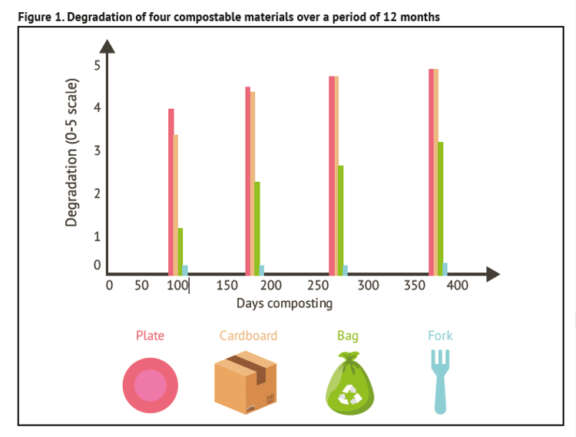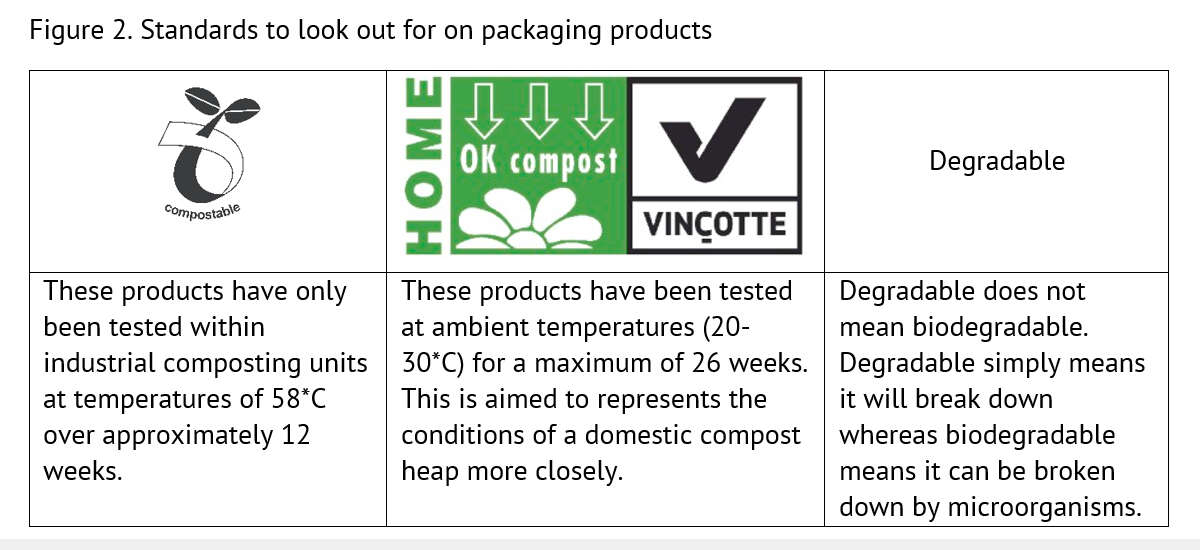Members' experiments
Compostable packaging - how well does it live up to its claim?
The fate of packaging has always been a concern, not just because of the waste of valuable resource but the damaging effects treating it as waste can have on the environment, especially if it is disposed of in landfill. Packaging is used to either keep a product fresher for longer or to protect a product during transportation. In recent years we have seen an increase in packaging used that claims to be compostable; but what does this actually mean and how well do these products actually compost?
So, I walk into the shop, I’ve forgotten my re-useable bag and instead buy a carrier bag that claims to be compostable, can I put it in my compost bin?
Well, not necessarily! Unfortunately it’s not as simple as that. There are a number of logos and standards to look out for on packaging products - see Figure 2 at the bottom of this webpage.
We asked our members to observe the fate of the following four materials in their own compost heap over a period of 12 months:
- A small piece of cardboard was used as a control as this is known to compost readily.
- A compost caddy bag made from plant-based film, certified as home compostable.
- A plate made from bagasse (processed sugar cane fibre waste), certified as compostable (only tested in industrial composting units).
- A plastic fork made from recycled plant-based material, certified as compostable (only tested in industrial composting units).
We asked our members to put the four materials into their compost heaps and observe them after 3, 6, 9 and 12 months. They were asked to score the materials on a scale of 0 – 5, where 0 is completely intact, and 5 is completely broken down without trace. Figure 1 at the bottom of this page shows how the four materials degraded over time.
The clear winners were the cardboard and the bagasse plate. After 6 months, these materials had completely degraded in more than 80% of people’s compost heaps and in 95% of heaps after 12 months. The plastic fork was the obvious loser showing virtually no degradation, even after a year. Somebody even kindly sent it back for us to use. This clearly needs much higher temperatures than a domestic compost heap to break down.
The bag was not such a clear story. Despite being marked as home compostable, its composting fate showed a high degree of variability among our members. After 12 months, the bag had only completely degraded in 26% of heaps. Among the remainder of people, their bags were in various states of degradation. We could not find any clear correlation between the rate of degradation and the type of compost heap or its temperature.
So the conclusion that we can draw from this is that some ‘compostable’ packaging materials are perfectly compostable in a home compost heap, but others are only suitable for commercial composting operations.
Unfortunately, it seems that in this case, the home compostable label didn’t give an obvious indication as to how well the material would compost at home.
We will continue to test packaging products that we come across in our compost bins and we would love you too as well. Please contact our composting team for further information and to get involved.

